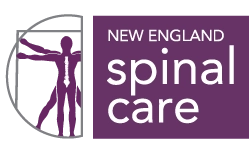Norwood MA Headaches: What Type Do You Have and How Can You Care for Them?

Headaches are one of the most common maladies in Norwood MA. However, knowing others are suffering along with you does not make the pain of headaches any better. Headaches can be chronic, occurring for more than 15 days out of 30, or come and go intermittently. There are quite a number of different headache types that you can experience. Let’s take a look at what these are, what symptoms are associated with them, and how to find relief.
Headache Types and Symptoms in Norwood MA
Sinus headaches: Spring has arrived and life is abloom all around you. Bees are buzzing and children are playing outside in the grass, but you are miserable. You are sneezing, wheezing, blowing your nose, and wiping your eyes constantly. You feel great pressure in your sinuses as if your face is about to explode. You know the headaches you are experiencing probably won’t go away until it’s time for winter once again, and you dread the wait.
So, why does this type of headache happen? A change in seasons and a rise in allergens in the air, especially during spring and summer, cause the air-filled sinus cavities to become backed up and the sinuses become inflamed. This causes a runny nose, fever, pain, and sensitivity in the front of your head and in your face. It is important to treat the underlying cause rather than the headache. Use a saline nasal spray or a humidifier to try to reduce the swelling in the sinus cavities. You may need to take some allergy medication as well.
Cluster headaches: Thankfully, this type of extremely painful headache is quite rare. It only lasts about an hour. The term cluster is not referring to where the pain is located but rather the number of days, weeks, or months that it occurs. After you have suffered through a cluster, they often go away for months or even years.
When a cluster headache occurs, the hypothalamus (the part of your brain that controls the autonomic nervous system and regulates hormones, sleep, breathing, and similar automatic body processes) becomes active when they occur. When it acts up, it stimulates a nerve pathway that causes eye pain. Blood vessels in the brain also swell, leading to a squeezing sensation.
Avoiding alcohol and smoking to give yourself a better chance at avoiding cluster headaches. Breathing pressurized oxygen through a mask for a few minutes (oxygen therapy) can help shrink blood vessels and reduce pain levels.
Migraines: The most well-known and feared of all headaches. As many as 39 million Americans get migraines, with the majority being female. These headaches have been linked to inflammation of the blood vessels and arteries in the brain. The nervous system is also involved in migraines.
You will likely experience pounding and throbbing head pain, usually on only one side in the temple area. They may last for 4 hours or 3 days. Some have auras, neurological disturbances such as flashes of light, that warn a migraine is about to hit. You may also have nausea, vomiting, sensitivity to light and sound, and dizziness.
Tension-type headaches: These headaches are very common but not well understood. They vary in intensity and frequency. Some people have daily pain while others experience a mild ache every now and again. Out of every 10 people, 7 will experience a tension headache at some point. These headaches may feel as if a vice is gripping your head and squeezing. You will have tightness in your neck and shoulders, and you may have sound and light sensitivity. As you might have guessed from the name, anxiety, and stress can bring about these headaches. Relaxation techniques may often help.
Headaches from Eyestrain: It is a myth that watching too much TV or reading while it's dark can hurt your eyes. However, many of us do sit for long hours in front of a computer or television. We may stay in the same position for hours. In order to combat this, it is vital to get up and move. Do a little stretching and moving about. If you must sit at work for long intervals, be sure to invest in a spine-friendly desk chair. Use screens with antiglare qualities. Even something as simple as tinted glasses can help with eyestrain headaches.
Finding Relief for Headaches
No matter which type of headache you are suffering from, it could be due to a common problem. A link has been established between a misalignment in the bones of the upper cervical spine (the top bones of the neck) and headaches of various types. There can be a few reasons for this, but one very obvious one involves the C1 vertebra: the top bone of the neck. This bone is susceptible to misaligning due to a minor blow to the neck or head. Things such as car accidents (whiplash), sporting injuries, physical altercations, and simply tripping and falling can cause this bone to move out of place. When this occurs, it impacts the function of the brainstem as it is located in the same spot in the neck. The brainstem comes under stress and causes improper signals to be sent to the brain. This often leads to headaches.
At our upper cervical chiropractic office, we specialize in finding these small misalignments in our patients. Once discovered, we develop a care plan that is individualized for the specific person we are working with. We use a method that is both gentle and precise to encourage the bones of the neck to move back into place. We do not have to pop or crack the spine to get positive results. Many patients report seeing an improvement in their headaches in as little as 1 or 2 adjustments.
OFFICE HOURS
Monday
9:00am - 7:00pm
Tuesday
9:00am - 7:00pm
Wednesday
Closed
Thursday
9:00am - 7:00pm
Friday
By Appointment
Saturday
Selective
9:00am - 2:00pm
Sunday
Closed
New England Spinal Care
106 Access Rd STE 7
Norwood, MA 02062



